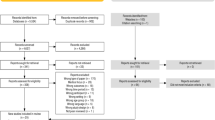Abstract
Incarceration affords an opportunity to provide health care to populations with limited access to care. Women in this population are at high risk for experiencing unintended pregnancies. It is not known what proportion of these women engage in unprotected intercourse in the days prior to incarceration and therefore may benefit from being offered emergency contraception upon their arrest to decrease their risk of unintended pregnancies. We sought to describe the proportion and characteristics of newly arrested women who are eligible for and interested in taking emergency contraception by conducting a cross-sectional study in an urban county jail booking facility. A 63-item survey was administered to women ages 18–44 within 24 h of being arrested in San Francisco. Eighty-four (29%) women were eligible for emergency contraception. Of these, 48% indicated a willingness to take emergency contraception if offered. Half of the women eligible for emergency contraception expressed ambivalent attitudes about pregnancy. Women who had taken emergency contraception in the past were more likely to say they would accept it (45%) than women who had never used it (25%, p = .05). The strongest predictor of willingness to take emergency contraception was not having a misperception about its safety, efficacy, or mechanism of action (RR = 1.9, 95% CI 1.2–3.0). Seventy-one percent of all women indicated that they would accept an advance supply of emergency contraception upon release from jail. Emergency contraception counseling and provision should be offered to newly arrested women as a key reproductive and public health intervention for a traditionally marginalized, high-risk population.

Similar content being viewed by others
References
Glaser JB, Greifinger RB. Correctional health care: a public health opportunity. Ann Intern Med. 1993; 118: 139-145.
Covington SS. Women and the criminal justice system. Womens Health Issues. 2007; 17: 180-182.
Weatherhead K. Cruel but not unusual punishment: the failure to provide adequate medical treatment to female prisoners in the United States. Health Matrix. 2003; 13: 429-472.
Crime in the United States, 2007. United States Department of Justice, Federal Bureau of Investigation. Accessed on: May 25, 2009. Available at: http://www.fbi.gov/ucr/07cius.htm.
Minton TD, Sabol WJ. Jail Inmates at Midyear 2008—Statistical Tables. United States Department of Justice, Bureau of Justice Statistics. Accessed on: May 25, 2009. Available at: http://www.ojp.gov/bjs/welcome.html.
Greenfeld L, Snell T. Women offenders. US Department of Justice, Bureau of Justice Statistics. 1999, pp. 1–14.
Clarke JG, Hebert MR, Rosengard C, Rose JS, DaSilva KM, Stein MD. Reproductive health care and family planning needs among incarcerated women. Am J Public Health. 2006; 96: 834-839.
Grinstead O, Zack B, Faigeles B. Reducing postrelease risk behavior among HIV seropositive prison inmates: the health promotion program. AIDS Educ Prev. 2001; 13: 109-119.
Task Force on Postovulatory Methods of Fertility Regulation. Randomised controlled trial of levonorgestrel versus the Yuzpe regimen of combined oral contraceptives for emergency contraception. Lancet. 1998; 352: 428-433.
Schroder KE, Carey MP, Vanable PA. Methodological challenges in research on sexual risk behavior: II. Accuracy of self-reports. Ann Behav Med. 2003; 26: 104-123.
Abbott J, Feldhaus KM, Houry D, Lowenstein SR. Emergency contraception: what do our patients know? Ann Emerg Med. 2004; 43: 376-381.
Schwarz EB, Gerbert B, Gonzales R. Need for emergency contraception in urgent care settings. Contraception. 2007; 75: 285-288.
Clarke JG, Rosengard C, Rose J, Hebert MR, Phipps MG, Stein MD. Pregnancy attitudes and contraceptive plans among women entering jail. Women Health. 2006; 43: 111-130.
Clarke JG, Rosengard C, Rose JS, Hebert MR, Peipert J, Stein MD. Improving birth control service utilization by offering services prerelease vs post-incarceration. Am J Public Health. 2006; 96: 840-845.
Standards for Health Services in Correctional Institutions. American Public Health Association. Washington, DC; 2003, p. 108.
Health and health care of incarcerated adult and adolescent females. In: Special Issues in Women’s Health. American College of Obstetricians and Gynecologists. Washington, DC; 2005, pp. 89–101.
Sufrin CB, Creinin MD, Chang JC. Contraception services for incarcerated women: a national survey of correctional health providers. Contraception. 2009; 80: 561-565.
Lakha F, Glasier A. Unintended pregnancy and use of emergency contraception among a large cohort of women attending for antenatal care or abortion in Scotland. Lancet. 2006; 368: 1782-1787.
Spence MR, Elgen KK, Harwell TS. Awareness, prior use, and intent to use emergency contraception among Montana women at the time of pregnancy testing. Matern Child Health J. 2003; 7: 197-203.
Stern AM. Sterilized in the name of public health: race, immigrants, and reproductive control in modern California. Am J Public Health. 2005; 95: 1128-1138.
Wilcox AJ, Dunson DB, Weinberg CR, Trussell J, Baird DD. Likelihood of conception with a single act of intercourse: providing benchmark rates for assessment of post-coital contraceptives. Contraception. 2001; 63: 211-215.
Paone D, Cooper H, Alperen J, Shi Q, Des Jarlais DC. HIV risk behaviors of current sex workers attending syringe exchange: the experiences of women in five US cities. AIDS Care. 1999; 11: 269-280.
Albert AE, Warner DL, Hatcher RA, Trussell J, Bennett C. Condom use among female commercial sex workers in Nevada’s legal brothels. Am J Public Health. 1995; 85: 1514-1520.
Acknowledgment
This work was funded by an Anonymous Foundation.
Author information
Authors and Affiliations
Corresponding author
Rights and permissions
About this article
Cite this article
Sufrin, C.B., Tulsky, J.P., Goldenson, J. et al. Emergency Contraception for Newly Arrested Women: Evidence for an Unrecognized Public Health Opportunity. J Urban Health 87, 244–253 (2010). https://doi.org/10.1007/s11524-009-9418-8
Received:
Accepted:
Published:
Issue Date:
DOI: https://doi.org/10.1007/s11524-009-9418-8




